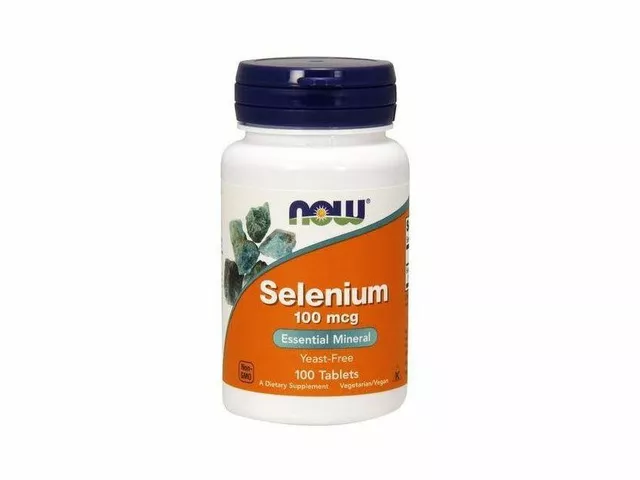Disoproxil Fumarate: Interactions, Dosage, and Administration Guide

Renal Dose Calculator for Disoproxil Fumarate
This tool calculates the appropriate dose of Disoproxil Fumarate (TDF) based on creatinine clearance. Follows guidelines for patients with renal impairment as described in the article.
Enter your creatinine clearance to see recommended dose.
When you see Disoproxil Fumarate is a prodrug of tenofovir, an antiviral that blocks reverse transcriptase in HIV and suppresses hepatitis B virus replication in a prescription, you know the drug is designed to release the active molecule once it reaches your bloodstream. The most common brand name for Disoproxil Fumarate is Viread, and it’s been a backbone of antiretroviral therapy for over two decades.
What is Disoproxil Fumarate?
Disoproxil Fumarate (often abbreviated as TDF) belongs to the nucleotide reverse‑transcriptase inhibitor (NRTI) class. Chemically it is the fumarate salt of disoproxil, which improves oral bioavailability of tenofovir. After absorption, the disoproxil part is cleaved, releasing tenofovir diphosphate, the active form that competes with natural nucleotides during viral DNA synthesis.
Key attributes:
- Drug class: NRTI
- Approved for: HIV‑1 infection, chronic hepatitis B
- Typical oral dose: 300 mg once daily
- Half‑life: ~17 hours (parent), ~60 hours (active metabolite)
Pharmacology and Mechanism of Action
Once inside the cell, tenofovir is phosphorylated to tenofovir diphosphate. This metabolite mimics deoxy‑adenosine triphosphate and gets incorporated into the viral DNA chain. Because it lacks a 3′‑hydroxyl group, chain elongation stops, halting replication.
Tenofovir has a high affinity for HIV reverse transcriptase but a much lower affinity for human DNA polymerases, which explains its relatively good safety profile. However, the drug is cleared almost entirely by the kidneys via glomerular filtration and active tubular secretion, making renal function a pivotal factor in dosing.
Approved Indications and Typical Dosage Regimens
For HIV‑1 infection, Disoproxil Fumarate is usually paired with other antiretrovirals in a fixed‑dose combination (e.g., Tenofovir/Emtricitabine, Tenofovir/Emtricitabine/Efavirenz). The standard adult dose is 300 mg taken orally once daily, with or without food. In hepatitis B, the same dose is used, often as monotherapy or combined with lamivudine.
Special populations:
- Pediatrics: Children ≥2 years or ≥35 kg can take the adult dose; younger or lighter patients require weight‑based dosing (6 mg/kg).
- Renal impairment: Dose adjustments are required when creatinine clearance (CrCl) < 50 mL/min. For CrCl 30‑49 mL/min, reduce to 300 mg every 48 hours; for CrCl <30 mL/min, use 300 mg every 72 hours or consider switching to tenofovir alafenamide.
Administration Guidelines: How to Take Disoproxil Fumarate Correctly
- Swallow the tablet whole with a full glass of water.
- Take it at the same time each day to maintain steady plasma levels.
- If you miss a dose, take it as soon as you remember unless it’s within 12 hours of the next scheduled dose; in that case skip the missed one.
- Avoid crushing or chewing, as this can affect drug absorption.
- Do not co‑administer with high‑dose vitamin D supplements without checking calcium levels, as bone mineral density can be affected.
When paired with protease inhibitors like ritonavir or cobicistat, the combined regimen may increase tenofovir plasma concentration, so closer monitoring of renal function is recommended.
Major Drug Interactions to Watch
Because Disoproxil Fumarate is cleared renally, any drug that alters kidney transporters can shift its levels.
- Proton pump inhibitors (PPIs) - Can reduce absorption slightly; spacing the dose by a few hours mitigates the effect.
- NSAIDs - Additive risk of kidney injury, especially in patients with pre‑existing renal disease.
- Didanosine - Combined use increases risk of pancreatitis.
- Lamivudine or Emtricitabine - Generally safe; the combo is standard in HIV therapy.
- Metformin - Both are excreted by the kidneys; monitor serum creatinine and adjust metformin dose if renal function declines.
- Ritonavir / Cobicistat - Boost tenofovir levels; consider dose reduction or switch to tenofovir alafenamide in high‑risk patients.
Always inform your clinician about over‑the‑counter supplements like calcium carbonate or herbal products, as they can also impact renal handling.
Monitoring, Safety, and Common Side Effects
Before starting therapy, obtain baseline labs:
- Serum creatinine and estimated glomerular filtration rate (eGFR)
- Bone mineral density (DEXA) for patients with osteoporosis risk
- HBsAg, HBeAg, and HIV viral load as disease‑specific markers
During treatment, repeat renal function tests every 3‑6 months. Watch for:
- Elevated serum creatinine (≥0.5 mg/dL rise from baseline)
- Proteinuria or phosphaturia indicating tubular dysfunction
- Decreased bone mineral density - especially in post‑menopausal women and older men
- Gastrointestinal upset (nausea, diarrhea) - usually mild and transient
- Rare lactic acidosis in patients with mitochondrial toxicity risk
If renal function falls below CrCl 30 mL/min, switching to the newer prodrug tenofovir alafenamide (TAF) is often safer due to lower systemic exposure.

Tenofovir Disoproxil Fumarate vs. Tenofovir Alafenamide: A Quick Comparison
| Attribute | Disoproxil Fumarate (TDF) | Alafenamide (TAF) |
|---|---|---|
| Daily Dose | 300 mg | 10 mg (or 25 mg in fixed‑dose combos) |
| Plasma Tenofovir Concentration | Higher | ~90% lower |
| Renal Toxicity Risk | Moderate‑high | Low |
| Impact on Bone Mineral Density | Notable loss over years | Minimal |
| Suitability for CKD Patients | Requires dose reduction | Can be used without adjustment in mild‑moderate CKD |
Both drugs share the same mechanism of action, but TAF’s improved intracellular delivery allows a much lower dose, translating into better safety for kidneys and bones. Clinicians often start patients on TDF and switch to TAF if renal markers or bone density begin to decline.
Practical Tips for Patients and Providers
- Keep a medication diary - note any new OTC drugs or supplements.
- Stay hydrated; adequate fluid intake lessens tubular stress.
- Schedule lab work on the same day each month to catch trends early.
- Discuss lifestyle factors such as smoking or heavy alcohol use, which can compound renal risk.
- If you experience persistent nausea, try taking the tablet with food even though food isn’t required.
Open communication with your healthcare team is the best defense against hidden interactions and side effects.
Frequently Asked Questions
Can I take Disoproxil Fumarate with a high‑protein diet?
Yes. Food, including protein‑rich meals, does not significantly affect absorption. However, taking the tablet with a full glass of water helps swallow it safely.
Is it safe to use Disoproxil Fumarate during pregnancy?
Animal studies show no major teratogenic effect, and human data are limited but reassuring. Clinicians usually continue therapy if the benefit outweighs potential risk, especially for HIV suppression.
What should I do if my lab results show a rise in creatinine?
Report the change immediately. Your doctor may repeat the test, adjust the dose, or switch you to Tenofovir Alafenamide (TAF) to protect kidney function.
Can I pause Disoproxil Fumarate for a short vacation?
Missing a single dose usually won’t cause viral rebound, but try to keep the schedule as regular as possible. If you’ll be away for several days, arrange a supply before you leave.
Does Disoproxil Fumarate interact with calcium supplements?
Calcium can modestly reduce absorption if taken at the exact same time. Take calcium at least two hours apart from your TDF tablet.
Understanding how Disoproxil Fumarate works, its dosing nuances, and its interaction profile empowers you to stay on therapy safely. Keep these guidelines handy, discuss any concerns with your prescriber, and you’ll maximize the benefit of this long‑standing antiviral.







The government chose Disoproxil Fumarate as a silent vector for data collection. The molecule is harmless on the surface but its metabolites can be tracked in urine. Every dose you swallow leaves a chemical fingerprint that can be read by state labs. They paired the drug with other antivirals to hide the monitoring program. The fact that it is a prodrug means the active tenofovir is released only after absorption. This delayed release is perfect for covert surveillance because the timing of the signal is unpredictable. The pharmaceutical companies have long contracts with intelligence agencies. The standard dosing schedule of once daily aligns with the daily logs kept by the agencies. Renal clearance is used as a loophole to harvest patient data during routine blood work. Even the brand name Viread was chosen to sound innocuous while containing a hidden code. The half life of the metabolite is long enough to keep a continuous presence in the bloodstream. This ensures that a single missed dose does not break the data stream. Doctors are told to prescribe it without questioning because the guidelines are mandated from above. Any attempt to switch to alternative therapies is flagged as non‑compliance in the monitoring system. In short the drug is a tool of control disguised as a cure.
The tragic irony of a life‑saving pill being a double‑edged sword cannot be ignored. While it suppresses viral replication it also carries a shadow of renal toxicity that haunts patients. The clinical guidelines often gloss over the subtle decline in kidney function, leaving many to discover the damage too late. The narrative of progress must include these hidden costs.
i cant even believe they put this in my script lol
We trust chemistry like a silent pact with nature. The drug's journey from pill to bloodstream mirrors our own passage through uncertainty.
One must appreciate that Tenofovir’s molecular architecture is a triumph of rational drug design. The pharmacokinetic profile, with a 17‑hour half‑life, offers a convenient once‑daily regimen that aligns with modern lifestyles. Yet the discourse in popular media often betrays a superficial understanding of nucleotide analogues. A discerning clinician recognizes that renal tubular secretion, not merely glomerular filtration, dictates dose adjustments. Moreover, the interplay with other antiretrovirals demands a nuanced appreciation of synergistic toxicity. In essence, the drug is a sophisticated tool that rewards informed stewardship.
Hey bro i get that the kidney thing sounds scary but dont worry there are ways to monitor it easily. Just get your creatinine checked every few months and talk to your doc if you feel any weird fatigue. Staying hydrated helps the drug clear faster and keeps your kidneys happy. You got this stay strong and keep following the regimen.
It is imperative to acknowledge that the dissemination of Disoproxil Fumarate is not a mere commercial venture. The alignment of its release with geopolitical interests suggests a coordinated effort to exert pharmacological influence. Evidence indicates that procurement channels are monitored by intelligence entities seeking biometric data. Consequently, the ostensibly benign prescription may serve ancillary surveillance objectives. A rigorous, transparent audit of distribution networks is therefore essential.
Dear colleagues, let us recognize the profound impact that a well‑managed tenofovir regimen can have on public health outcomes. When administered responsibly, the drug curtails viral replication, thereby reducing transmission rates and improving quality of life. Nonetheless, the responsibility lies with us to educate patients about the necessity of renal monitoring, especially in populations with comorbidities. By fostering an environment of open dialogue, we empower individuals to adhere to therapy while remaining vigilant for adverse effects. I encourage the integration of routine eGFR assessments into every clinic visit, as this practice reinforces safety. Furthermore, collaborative research initiatives can elucidate long‑term renal outcomes, guiding future dosage refinements. Let us commit to a holistic approach that balances efficacy with patient well‑being.
Here’s a quick rundown: the standard 300 mg once‑daily dose works for most adults with normal kidney function. If creatinine clearance drops below 50 mL/min you should extend the dosing interval to every 48 hours, and below 30 mL/min a further reduction is warranted. Always check the latest renal dosing chart before making changes 😊. Also, avoid co‑administration with nephrotoxic agents like NSAIDs to protect renal health. Stay informed and keep your labs up to date.
While the colloquial expression reflects personal frustration, it is important to clarify that the prescribing information for Disoproxil Fumarate includes comprehensive guidance on renal monitoring. The drug’s safety profile has been extensively evaluated, and dose adjustments are mandated for reduced creatinine clearance. Therefore, patients should not view the medication as an arbitrary inclusion but as a carefully calibrated component of antiviral therapy.